|
Virtual Subwoofer
ASX-103-Mk3
C$1,280
Untitled Document
[US$ 1024]
 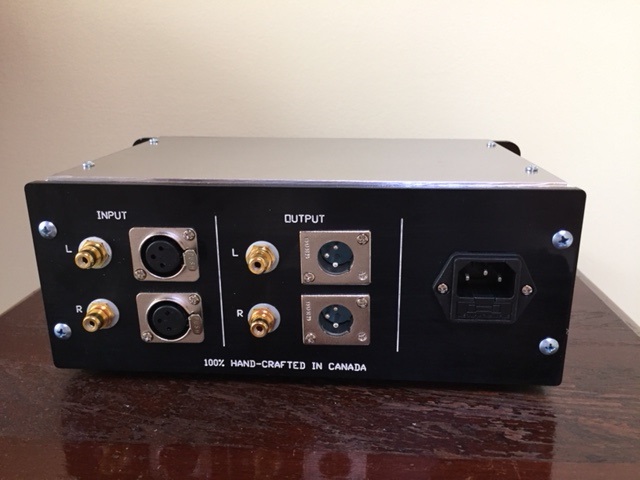
 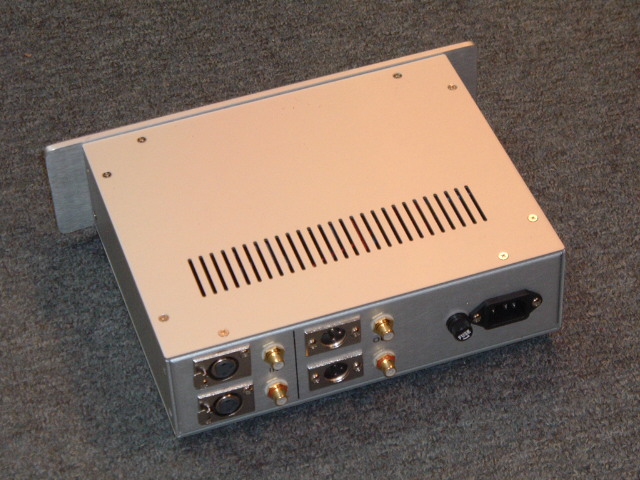  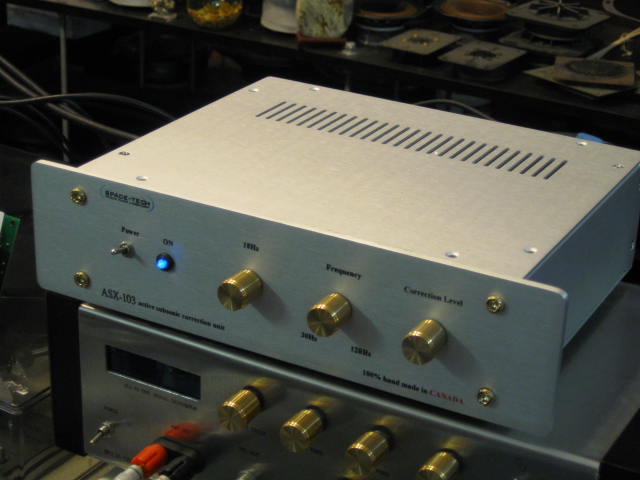
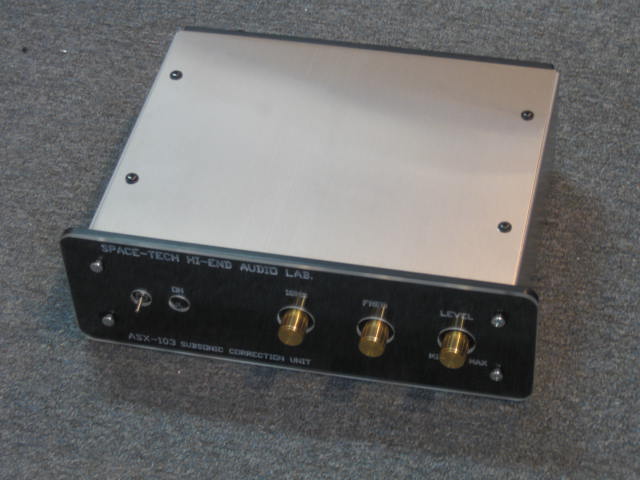 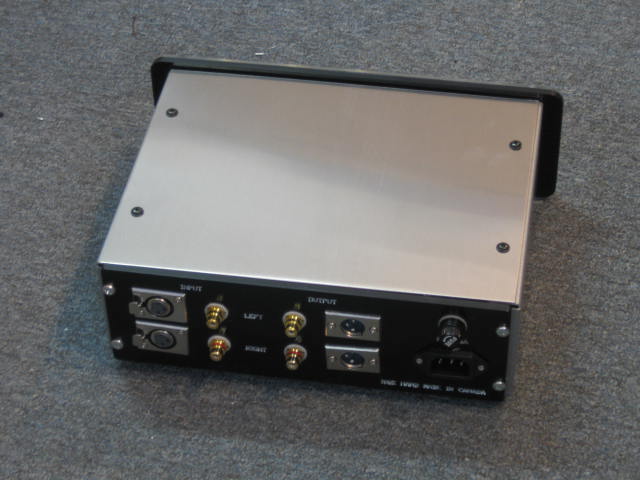 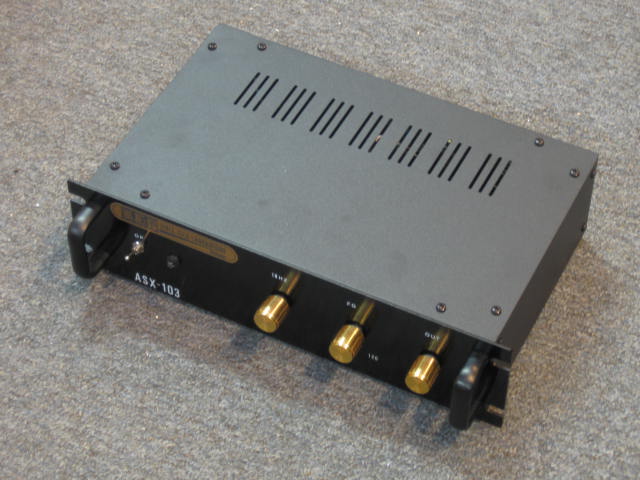 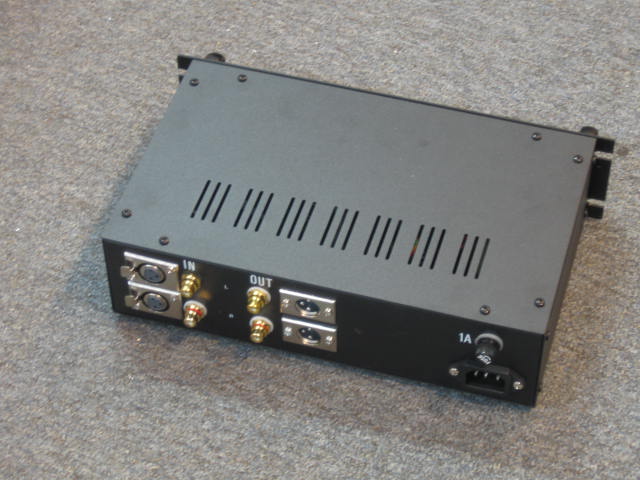
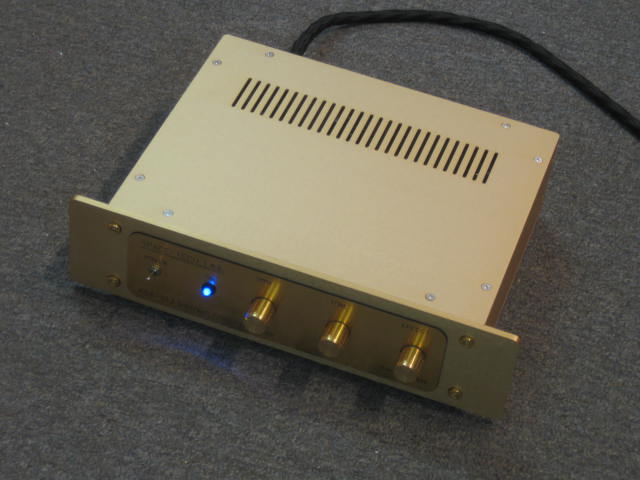 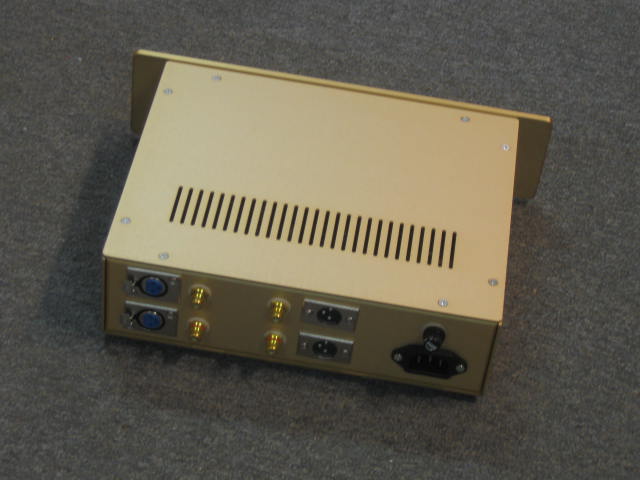  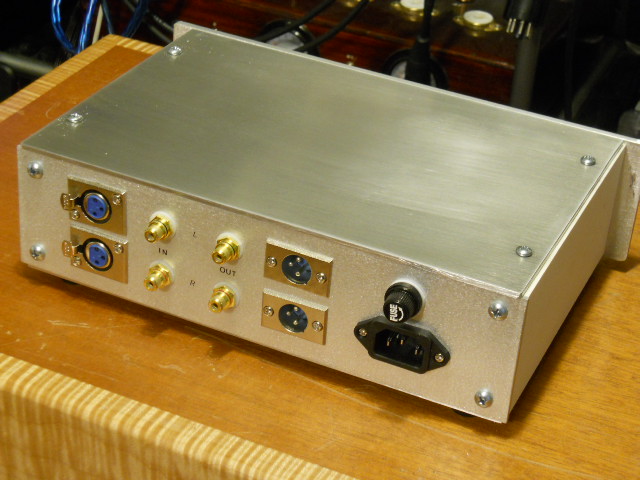
ASX-103-Mk3 VIRTUAL SUBWOOFER (Get the ultimate super low frequency regeneration without the need of any subwoofer but with a regular speaker)
This is one of our best seller and giant killer. It is not an old school equalizer but is an advance analog computer instead. The following equation is a simplified version of the internal programmed algorithm with pure analog computation process, absolutely no digital noise and no quantization error of any kind.
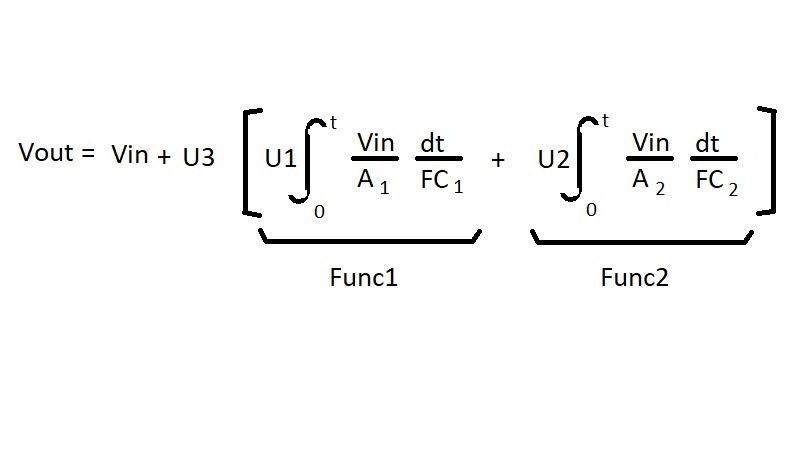
There are 3 control knobs in the front panel. The left most knob is the "18Hz" (U1 of FUNC1) , which control the level of boost with center frequency of 18Hz. The middle knob is "<80Hz" (U2 of FUNC2), which control the level of boost of 80Hz and below. The right most knob is "EFFECT" (U3) , which control both the effect of (Func1 + Func2) .
From the equation, when the"18Hz" set to minimum, then U1 = 0 and Func1 become zero and will be bypassed. When "<80Hz" set to minimum, then U2 = 0 and Func2 become zero and also will be bypassed. The "Effect" control how much Func1 + Func2 add to the original signal, when set to minimum any boost effect will be bypassed no matter what is U1 and U2.
An old school EQ will chop the input signal (Vin) into many section (if 10 bands then will chop into 10 separate sections) and combine them back at the output, which will destroy the original beauty and integrety of the input signal and ruin the sound stage and details as well as everything. Instead, the output signal of our design is purely the input signal(Vin) + Func1+ Func2. The Vin has not been touched and is still ORGANIC. With this unit, your own speaker can output super low subsonic frequency without the needs of any subwoofer , you will always get the best sonic performance without the worry of matching subwoofer speed and placement . This unit already built-in "harmful subsonic" filter to cut off subsonic freq range that might hurt speaker drivers, it can make almost any 8"-10" woofer sound like a 15"- 30" woofer with even better solidity, control, punch, tenderness and elasticity, acoustic freq response can extend down to a new record of 10Hz.. With this crossover and a 80-100W solid-state power amp , almost any 8-10" woofer in a ported cabinet can sound like a $10,000 active subwoofer. This model equipped with XLR and RCA inputs and outputs, and it can also serve as XLR to RCA or RCA to XLR converter. Use either RCA or XLR input, you can have true balanced output signal. Or use XLR input and convert down to RCA output with the balanced input performance.
You can just connect this unit between your CD and pre-amp , or between pre-amp to power amp, no extra power amp required and no extra subwoofer speaker needed, just use your own set of speaker systems and it will sound like you have added a super performance subwoofer. Many customer complaint they spent many thousands on their brand name audiophile system, but still can't get the real live performance effect . The major reason is live performance give out music with full range of spectrum (from 10Hz to 50Khz) , if your system can't regenerate truthfully in the very low frequency spectrum (10Hz to 50Hz range) , you will never get the real live performance feeling. Once added this unit into their system, every customers can easily get back the live performance sound stage response, much more musicality and openness. You will never get the same boost in peformance with the same amount of investment in any other products.
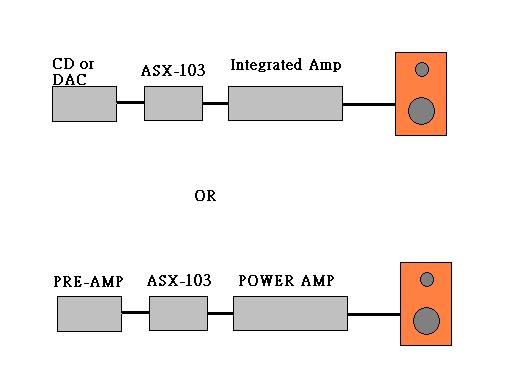
 Dual XLR+RCA input version add C$250 Dual XLR+RCA input version add C$250
Specification :
Input impedance : 100Kohm , Output impedance: 100ohm
Frequency response : 10Hz - 100KHz (-3db)
S/N : > 100db
Customer feedback: (from Wolfgang)
I recently had the good fortune to find my way to the sound studio of Space-tech Laboratories in New Westminster B.C., Canada. A friend had recommended the visit to address a problem I was having with a much loved Rogue Audio 99 Super Magnum pre-amp—which was passing a persistent buzz into my audio system. Albert, chief tech, designer and proprietor of Space-tech took a close look at the Rogue and declared it not to be the culprit—sending me home to run down the real cause which turned out to be a disagreement between the Rogue and the Rotel solid state amplifier to which it had been mated for years. Upon reporting back to Albert about resolution of the buzz problem, I happened to ask his views on the best way to connect my two sub-woofers to a PrimaLuna Premium HP tube amp which I had purchased years ago to eventually replace the Rotel, but which lacked the former’s line-outs for sub connection. Albert suggested various options and methods of connection, but then nonchalantly added one I had not considered, which was to eliminate the sub-woofers altogether. I explained that I needed the subwoofers as my listening room (read: living room) was a sonically challenged—and my twin B&W PV1’s were the only solution that had even begun to address the problem. Albert handed me a small (11’X6’X3’) non-descript electronic (active) black box labelled “ASX 103 MK3 Subsonic Correction Unit”. He explained its’ underlying principles. Essentially, the unit inputs a signal from a source or a pre-amp, augments the signal at the low end of the frequency spectrum, allowing user adjustment by way of two face plate mounted potentiometers attenuating the 18HZ and <80Hz points along with a third potentiometer which governs the over-all strength of the effect on the out-put signal. The technicalities of how the unit accomplishes this are laid out more explicitly and scientifically on Space-tech’s website. It was enough for me to understand that the unit accomplishes its purpose without degrading the input signal at all, in effect processing 100% of the signal received and outputting 115% of the same signal. The “corrected” signal, to use Space-tech’s nomenclature, is specifically intended to augment the mid-range and low-range portions of the frequency spectrum so as to allow your own speaker drivers to deliver more of these parts of the spectrum then they do on their own. Albert called the unit a “virtual sub-woofer” that expands the mechanical function and effect of your speaker’s existing drivers.
I was fairly sceptical about Albert’s explanation. I was particularly dubious about the idea that I might add electrical energy to the signal in order to seek additional mechanical movement from the mid and low range drivers in my precious KEF Reference 203/2 speakers. If KEF had wanted to get their top of the line speakers (now slightly dated—but not entirely obsolete) to deliver this much bass (read: mechanical driver movement) they ruddy well would have done so. I was nervous about mucking with the dictates of KEF engineers and technicians. I expressed these concerns to Albert. He convinced me that the technology for the ASX 103 was not new, it was in fact an old idea, though Space-tech’s iteration was an updated proprietary design. He assured me that as long as the augmented motion of the drivers was no more than one half inch I would be well within the design parameters set for my drivers. Given the opportunity to try the unit at home without risk—I agreed to put it up against the twin B&W’s sitting in my living room when I hooked up the PrimaLuna.
And this I verily did that same evening. The PV1 subwoofers are beautiful things with dual reciprocating 8inch vertical aluminum drivers housed in a round aluminum pressure vessel. I confess they never did much more than idle at low volume in my system—as to let them run with a full head of steam would be both unnecessary and cause for immediate eviction. Nonetheless, the neighbours were most certainly always aware when they were running as they filled the room with a wave of base, profound in some places and totally absent in others—the standing wave problem that had caused me to get two of them in the first place. I set the ASX 103 MK3 up in the system and spent the evening doing an A/B comparison powered by both the Rotel solid state amp and the Primaluna tube amp. The difference between the full set of sub-woofers and the ASX 103 were profound and obvious. Not wanting to leap to conclusions, I spent another five days continuing the A/B comparison with only the PrimaLuna for power. The result? Mind-blowing. The B&W’s—even when set up perfectly, which was no mean feat with two of them at opposite ends of a 10 meter long trapezoidal room, gave great “ambient” bass, as they were designed to, while augmenting additional “rear” speakers. But by comparison, the ASX 103 drove a much more precise and controlled “directional” bass from the drivers of my front speakers. More compelling perhaps than that, adjustment of the bass via the panel controls of the ASX 103 were simple, viable and effective on an album by album basis if not also on a song by song basis (depending on level of OCD). Minute adjustments on the volume and cross-over of the sub-woofers was also always possible (the B&W’s have a small panel on their fronts) but each such adjustment would have big effects throughout the “ambient” bass stage—not always for the better or as intended. More importantly, the bass emanating from the ASX 103/front speakers created a larger and more even sound field than the separate sub-woofers—in other words—while not over-coming the room dynamics completely—the directional front point source of the sound created a more even, realistic musical experience than the separate sub-woofers—when sitting in the appropriate best listening position for the two front speakers. And it was indeed this effect that caused the next step for me.
If the B&W PV1 sub-woofers were to be bested by the Space-tech ASX 103 MK3, and find themselves surplus to requirements—what would happen if I unplugged the rear speakers from my system and went with only the front speakers in two channel mode with the ASX 103? By my third evening of listening with the ASX 103 I found myself unplugging the extra rear speakers each time I unplugged the sub-woofers. The amount of extra detail and definition delivered by the front speakers augmented by the ASX “virtual sub-woofer” was incredible. Eventually I stopped plugging in the rear part of my speaker system. These rear speakers (plus miles of precious wiring) have now been retired with the sub-woofers. The ASX 103 MK3 has been moved into my “new” two channel system on a permanent basis. My KEFs have never sounded so good and I suspect that I may have run out of things to improve—mind you--Space-tech offers an ASX 103 MK4 with an added tube buffer section, and Albert’s tube pre-amps and amps are like wine to an audio-holic. I will indulge again at Spece-tech’s studio when the fates allow. The Space-tech ASX 103 MK3 is a brilliant little audio gem.
|